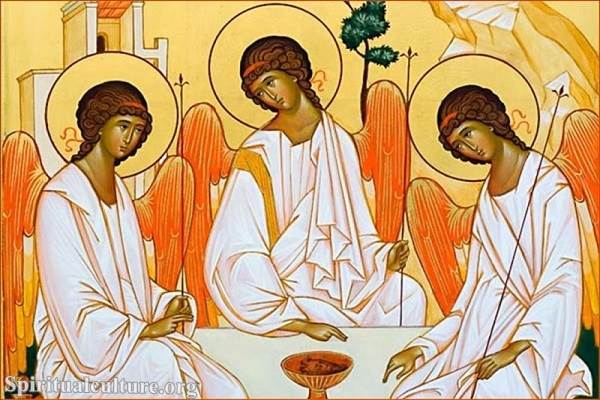In the hush of a cathedral or the warmth of a small chapel, a silent language speaks. You see smoke rising like whispered prayers, feel the cool touch of holy water on your forehead, hear the clear chime of bells calling your heart to attention.
Why do Catholics surround their worship with so many objects, gestures, and scents? Are these just traditions passed down for aesthetic beauty, or do they carry deeper spiritual meaning?
As Spiritual Culture, we invite you to journey with us into this sacred world. In this article, we will uncover why incense curls toward heaven, why chalices gleam in candlelight, and why every object—from the smallest relic to the grandest altar—acts as a bridge between earth and the divine. We will explore what these sacred elements mean, how they shape the soul, and why they continue to draw millions into a life of wonder and devotion.
Whether you are Catholic, curious about Christian rituals, or simply a seeker of deeper truths, this exploration will open your heart to the mystery and beauty of faith expressed in tangible ways.
The Ancient Fragrance: Incense as a Symbol of Prayer and Purification
Incense in Scripture and Tradition
The use of incense in Catholic worship is deeply rooted in Scripture. In the Old Testament, God commands Moses to burn incense as a perpetual offering:
“Aaron shall burn fragrant incense on it; he shall burn it every morning when he trims the lamps.” (Exodus 30:7)
For centuries, incense has signified prayers rising to God, as beautifully expressed in Psalm 141:2:
“Let my prayer be counted as incense before you, and the lifting up of my hands as the evening sacrifice.”
Spiritual Meanings of Incense Smoke
The rising smoke represents human longing for the divine, a visible sign of invisible prayers. In a noisy and often distracted world, the slow, gentle movement of incense invites believers to slow down, breathe deeply, and turn inward.
Incense as Purification and Sacred Space
Beyond symbolizing prayer, incense purifies the worship space and the gathered community. As the smoke drifts among the pews, it reminds us that we are entering holy ground, setting aside worldly concerns to encounter the sacred.
Sacred Objects: Touchpoints of the Divine
The Altar: Heart of the Eucharistic Mystery
The altar stands as the center of Catholic worship, representing Christ himself—the true sacrifice. During Mass, it becomes the place where heaven and earth meet, where bread and wine become the Body and Blood of Christ.
As Hebrews 13:10 proclaims:
“We have an altar from which those who serve the tent have no right to eat.”
The altar is more than stone or wood; it is a mystical table of grace and communion.
Chalices and Patens: Vessels of the Sacred
The chalice holds the wine that will become the Blood of Christ; the paten holds the bread that becomes His Body. These vessels are often made of precious metals, reminding us of the immense value of the mysteries they hold.
Just as a priceless treasure deserves a beautiful container, so too do these sacred elements call for vessels that inspire awe and reverence.
Holy Water: A Daily Baptismal Reminder
At the church entrance, holy water invites each person to recall their baptism and renew their commitment to live as a child of God. Making the sign of the cross with holy water is a powerful, simple act of identity and belonging.
Vestments: The Priest as a Living Sign
Liturgical Colors: Seasons of the Spirit
Each liturgical season is marked by colors: white for purity and joy, red for martyrdom and the Holy Spirit, green for growth and hope, purple for penance. These colors guide the community into a shared spiritual rhythm, mirroring the interior seasons of the soul.
Symbols of Service and Sacrifice
Vestments such as the alb, stole, and chasuble signify the priest’s role as a servant and a living image of Christ. When a priest dons these garments, he steps into a sacred drama—acting not on his own behalf but in persona Christi, the person of Christ.
Relics: Bridges Between Heaven and Earth
Relics in Scripture
The veneration of relics has biblical foundations. In 2 Kings 13:21, a dead man comes to life upon touching Elisha’s bones, revealing the enduring holiness carried even in physical remains.
The Meaning of Relics in Catholic Devotion
Relics—whether bones, clothing, or other personal items of saints—serve as reminders that holiness is not abstract. These tangible connections inspire the faithful to believe that sainthood is possible and encourage them to live lives of courage and virtue.
Icons and Statues: Windows into the Eternal
Veneration, Not Worship
Icons and statues are often misunderstood. Catholics do not worship these images; rather, they venerate them as windows into the divine mystery. When one kneels before a statue of Mary or an icon of Christ, they are directing their heart to the spiritual reality beyond the material form.
Drawing the Heart Beyond Words
Images help the mind focus and the heart ascend. In a world dominated by screens and words, these sacred visuals invite a different kind of seeing—an inner vision of love, compassion, and divine presence.
Bells and Candles: Awakening the Senses
Bells: The Voice of the Church
Church bells mark sacred moments, call the faithful to prayer, and remind us of the presence of God throughout daily life. Their sound cuts through our routines, inviting us to return to the center.
Candles: Christ the True Light
Lighting candles is a prayerful act, a way to express hope and remembrance. As Jesus says in John 8:12:
“I am the light of the world. Whoever follows me will never walk in darkness but will have the light of life.”
Candles flicker as gentle symbols of Christ’s presence, illuminating even the darkest places in our hearts.
The Language of Ritual: Making Mystery Tangible
Beyond Words: Worship Through the Body
Catholicism is profoundly sacramental—it insists that divine grace is experienced through tangible signs. The body is engaged through scent, sight, touch, and sound. This full participation embodies love for God not just as an intellectual idea but as a total offering of self.
A Countercultural Invitation
In a culture that prizes efficiency and control, the slow, deliberate language of incense and ritual offers a radical invitation: to surrender, to listen, to receive.
As Pope Benedict XVI beautifully stated:
“The liturgy is the summit toward which the activity of the Church is directed; it is also the font from which all her power flows.”
Sacred Objects in Daily Life
Bringing the Sacred Home
Many Catholics bring elements like holy water, crucifixes, and small icons into their homes. These objects act as constant reminders that faith is not confined to Sunday Mass but permeates every corner of life.
Simple Acts, Profound Effects
Placing a small statue on a nightstand or lighting a candle before dinner may seem minor, yet these acts open space for grace, inviting God into ordinary moments.
Rediscovering Wonder: An Invitation
Why Symbols Still Matter
In our hyper-rational world, symbols and rituals remind us that not all truth fits into words or data. They help us touch mystery, encounter beauty, and glimpse eternity even within time-bound moments.
Incense and Objects as Spiritual Teachers
Incense teaches us to rise beyond the mundane. Holy water urges us to remember our true identity. Icons train our hearts to see the invisible. Each object becomes a spiritual teacher, silently shaping the soul.
Reflect and Reimagine
What if worship was not just about reciting prayers but about entering a living encounter with the Sacred? What if each object, each fragrant curl of smoke, each glimmering chalice invited you deeper into the mystery of divine love?
All these sacred signs are not add-ons to faith; they are profound expressions of it. They awaken the senses and the spirit, calling you to see all of life as liturgy, every moment as an opportunity to touch the divine.
As Spiritual Culture, we encourage you: next time you step into a church, breathe deeply, watch the light play on a statue’s face, trace the sign of the cross with holy water as though it were your first time. Let these gestures draw you beyond routine into wonder, beyond habit into encounter.
May every sacred object become a doorway, every fragrance a breath of prayer, and every flicker of candlelight a reminder that you are eternally loved and called to shine.

